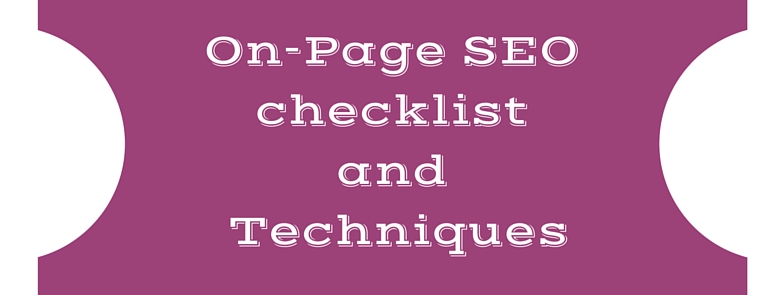How to map keyword strategy to B2B buyer intent? While you are engaged in keyword research and content marketing, it is essential that it aligns with the objectives of your business. Here, the experts suggest orienting the keyword strategy on the different stages of the buyer’s journey.
Because keyword research is a process that includes the spreadsheets of hundreds of thousand keywords or phrases, it sometimes can be overwhelming for the clients. It is best to arrange and organize the keywords according to the core theme, such as solution sets or product categories. With this one can make the process more digestible to the clients.
The professionals engaged in keyword research make all the efforts to prioritize the keywords recommendation based on the given metrics such as the clients’ approval, periodic (weekly or monthly) search estimates. While dealing with the keyword research campaigns, the following situations often arise:
- The clients usually cannot handle a huge volume of information that is handed to them.
- While we focus on all the reference points, recommendations, and ongoing trends, we may lose the concentration over the main subject.
- The deliverables can be ignored or become obsolete.
In the keyword research process, where we go with the strides, there is too much scope and potential to improve. The recently developed tactic has mapping keyword recommendations for various levels in the B2B buying cycle. The method is getting the affirmative response from the clients as it relates the keyword opportunity to better sales behaviors.
Mapping the keywords to B2B buyer behavior
To meet the requirements set by the clients, the marketers make efforts to align the products, solution, and organization. The process further provides some complementary sets of keyword targets that may be helpful in balancing with present-day content marketing strategies.
The following two phrases are defined as the sets of keyword prioritization:
- Assessing objectives in search intent on a per-keyword basis.
- Confirmation of applicability that is based on the client specific procedures and objectives.
It is nice to define the search objectives for keywords research so that type of content marketing could be understood. And once the directions are set, it is necessary to review from sales perspective.
Detailed study of keyword specific search results
During the process of defining content marketing priorities through reviewing the organic listings, one needs to study the objectives and kinds of content that are easily attained on the first two SERPs. In general, the following types of content are found in search results for a keyword:
- Some information based pieces of content, usually basic or 101 level material, and two Wikipedia entries.
- For commercial organizations, two or more solutions-oriented results.
- You also find here the snippets and answer boxes featured by Google.
So, we see that the results are mainly the highly required information based content for the users and beginning buyers. At this point, we feel a great need of the more conversion oriented results such as landing pages, PDFs, webinars, sales collaterals, and recommendations. We also realize that the Wikipedia information also, applies a kind of design technique to give its material a reader-friendly appearance, but it does not contain the conversion actions.
With such information, a marketer finds the direction for its marketing efforts and can determine the potential of any content material’s sales funnel.
Assess keyword difficulty metrics
With Moz’s keyword difficulty grader, a team can assess the soundness of the web pages, home pages and domains that are received in an organic search result, in comparison to the client’s overall authority. While the organization’s score gets the comparison of existing results, it is wiser not to prioritize any specific keyword (while dealing the short term strategy).
Since there is the need of detailed analysis for determining viability in the tactical application; homepage results get more challenging, specifically in a relation to the keyword phrases of the complex nature.
While you want a better ranking of the competitive homepages in the matter of target keyword, it is essential to consider the strength of domain, quality, and volume of the inbound links so that it becomes easy to determine to prioritize the tactics.
Evaluation of the related keywords
It is furthermore suggested to take a note of the related keywords Google providers while you are evaluating the organic search results and defining the priorities of keywords. As an interesting outcome of the action, you will find that.
When defining keyword priorities and evaluating organic search results, take note of the related keywords Google provides, as well. Marketers will find this in both. Google’s autocomplete function and in the “Searches related to…” section typically found at the bottom of the search results page. Google’s new launch “People also ask” element is also very helpful in this relation.
With this entire information collection, you have a deep insight of the content marketing assets that need to take or support material required for better keyword research process.
Collaborate with the sales team
The other important step is to provide the keyword related data and details of the content marketing tactics to the sales department for analysis and review. Here the entire data and reports are checked in the prospectus of the following questions:
- Is the specific content marketing assets are enough helpful in satisfying the organizational challenges and objections?
- Is the set of information achieved, seems enough to present the clear picture of needs and situations?
- What is the further process to define the content assets to stack up against the market offers and experiences?
Without any doubt, the efforts are made to get the favorable and positive feedbacks. And if it is not happening, there is a great need of discussing the future steps to figuring the un-utilized opportunities and oversights.
Review paid vs. organic data:
When you are aligning the keyword targets for SEO, you are always suggested to review the paid data and the organic data in the terms of conversion volume, rate, and the quality. All these elements are very essential supportive of SEO based keyword research. Following are some common ideas which are often considered an experienced:
- While you go with low cost-per-conversion keywords and campaigns, you will simply get, the more top-of-funnel users response, i.e. the action relating to research, discovery and other interest seeking action.
- The keyword research is prioritized on the basis of conversion rates and lead volume.
- The keyword that can generate sales-ready leads needs to be evaluated with a great care and concentration.
Well, I’ve described how to map keyword strategy to B2B buyer intent, If you have any suggestions then share with us.








